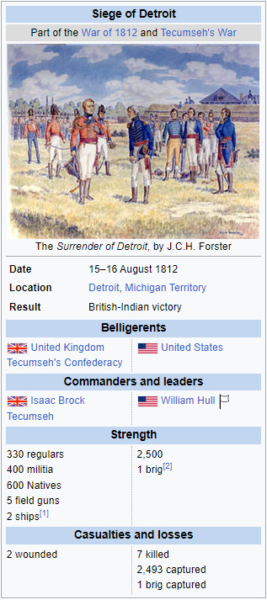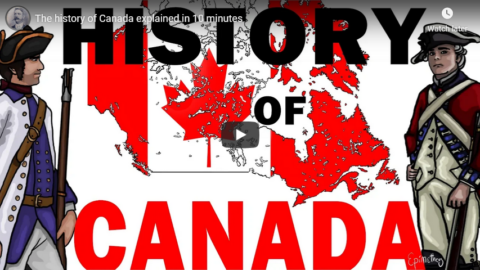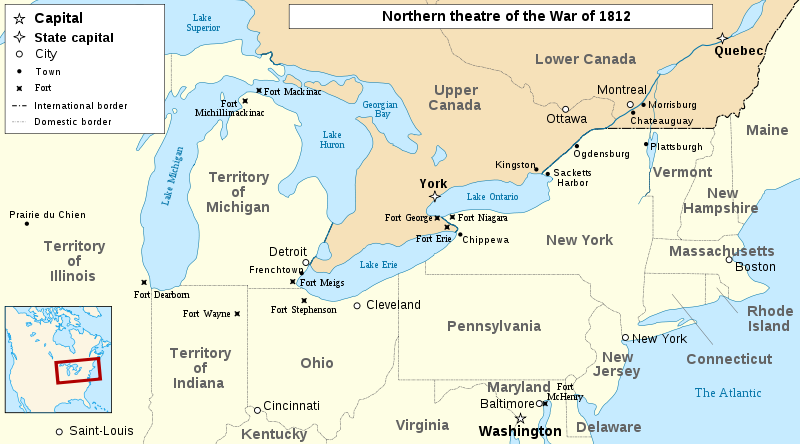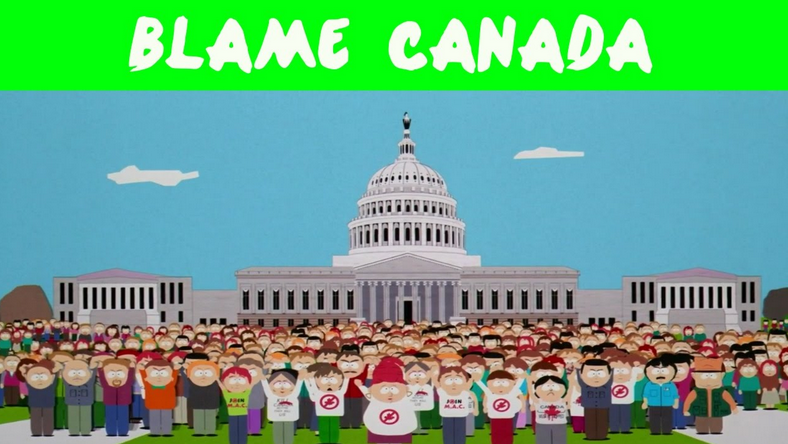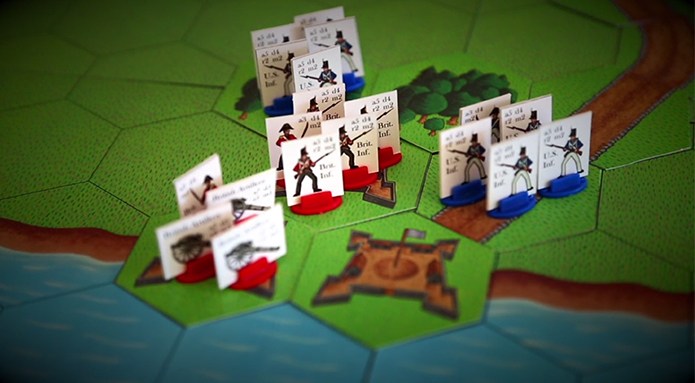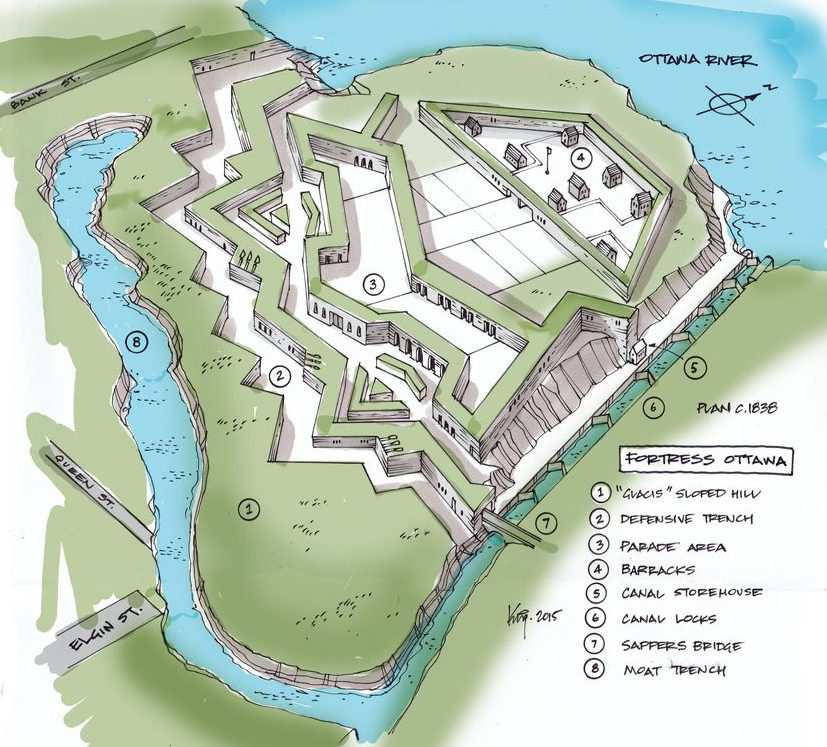Charlie Dean Archives
Published Jan 1, 2014USS Constitution is a wooden-hulled, three-masted heavy frigate of the United States Navy. Named by President George Washington after the Constitution of the United States of America, she is the world’s oldest floating commissioned naval vessel. Launched in 1797, Constitution was one of six original frigates authorized for construction by the Naval Act of 1794. Joshua Humphreys designed the frigates to be the young Navy’s capital ships, and so Constitution and her sisters were larger and more heavily armed and built than standard frigates of the period. Built in Boston, Massachusetts at Edmund Hartt’s shipyard, her first duties with the newly formed United States Navy were to provide protection for American merchant shipping during the Quasi-War with France and to defeat the Barbary pirates in the First Barbary War.
Source: http://en.wikipedia.org/wiki/USS_Cons…
CharlieDeanArchives – Archive footage from the 20th century making history come alive!
December 2, 2024
USS Constitution – “Old Ironsides” – 1950’s newsreel
June 1, 2024
From Sic semper tyrannis to the “Non-Aggression Principle”
On Substack Notes, kulak points out that the beliefs that led to the American colonists taking up arms against King George’s government don’t expire:
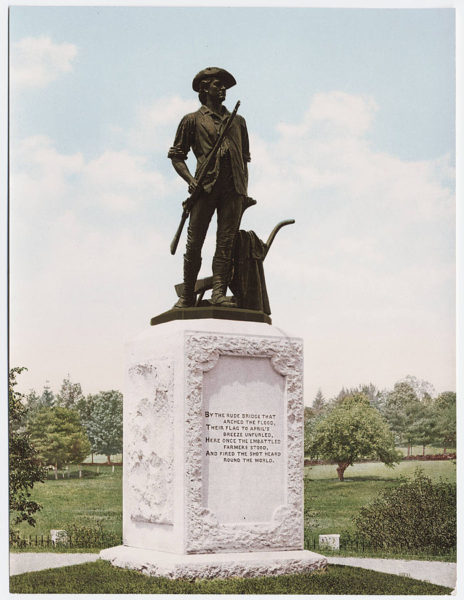
A statue idealizing the individual minutemen who would compose the militia of the United States.
Postcard image of French’s Concord Minuteman statue via Wikimedia Commons.
One of the things that drives me nuts about people who claim to subscribe to modern libertarianism (as opposed to the American Revolutionary ideology) is the claim to be “peaceful” and “antiwar”
Libertarianism isn’t antiwar. The American founding values aren’t antiwar. They never have been. It is a permanent declaration of war.
Live Free or Die
Sic Semper Tyrannis.
“Thus always to tyrants”
When does “always” end? NEVER
If those values succeed then 10,000 years from after your descendants have forgotten the name of America itself, they will be killing tyrants and carving their hearts from their chest.
Libertarianism is not “peaceful” it is a declaration that no peace shall ever exist again. That a free people will never have peace with any who’d seek to rule them. Eternal civil war against all would-be tyrants from the pettiest to the most grandiose.
The “non-aggression principle” does not state that the libertarian my never aggress against another … It states only that he may not aggress FIRST, afterwards any and all aggression, even the most disproportionate, is permitted.
“Taxation is Theft” is the claim that a tax collector or government agent paid out of taxes has the same moral status as burglar/home invader caught in your child’s bedroom. It is the claim that that those who benefit and enable the welfare programs paid out of your taxes have the same moral protection from your wrath should you gain the upper hand as a mugger actively threatening you with a gun lest you hand over your wallet.
“Taxation is Theft” necessarily justifies just as revolutionary and total a upset in the political order as “Property is Theft” did … because theft inherently is a violation of your extended person to be resisted without restriction. And just as the Communist claim of “property is theft” justified the most total and brutal wars in human history to destroy the social order (and social classes) who made “property” possible. Libertarianism and “Taxation is Theft” must necessarily justify just as extreme a charnel house to render “Taxation” impossible.
“Live Free or Die” is necessarily, and has always been a declaration of war upon those who would choose not to “live free”, or remain loyal to a tyrant or master.
The founding fathers didn’t make nice with the Loyalists who remained faithful the crown: They ethnically cleansed large portions of them equal to 4% the US population (notably the Loyalist Dutch of New York), confiscated their lands, and drove them into Canada, several mothers with babes nearly starving. Then they invaded them again in 1812. (Read Tigre Dunlop’s interviews with the survivors in Canada in “Recollections on the War of 1812”).
What Loyalists who managed to remain in the US did not regain full rights as citizens until after the war of 1812, almost 40 years after the revolution.
So if you claimed to believe in “Libertarianism” or the American Revolution, ask yourself: “Do I really believe in Liberty and the American Revolution? Or am I a just a flavor of Progressive Democrat who thinks the income tax should be slightly lower?”
Signed,
A Canadian Descended from Loyalists
September 4, 2023
Our own little Cyberpunk Dystopia
Kulak suggests we get comfortable with the tropes of Cyberpunk Dystopias, since we’re already living in one:
One need not spend long in radical or dissident Right discourse to encounter talk of Psy-ops and demoralization campaigns.
Some of this traces back to Yuri Besmenov’s work on subversion, some to speculation about “Operation Mockingbird” type media manipulation schemes, and some to simply obvious symbolic work being done for seeming for no reason except to horrify, offend, “blackpill”, and create a sense of helplessness amongst regime enemies.
One can point to the massive sentences for Jan 6th protestors, the recent charges of Trump (outside any norm or existing political theory or constitutional theory), or most ridiculous: Dystopia Porn news stories.
I recently heard a story repeated by a commentator of a news story of a trans-woman working with doctors to be amongst the first to receive a womb transplant which would allow a biological male to gestate a baby, this person was excited, completing the South Park plotline (seriously 2005 s09e01 “Mr. Garrison’s Fancy New Vagina” look it up), stating that they were excited that they might be the first trans-woman to get an abortion.
Why would the medical establishment play along and at least pretend to enable this obviously malicious and self-destructive wish? Why would the media bother to report such a crazy person’s putrid desire?? This religious commentator could only describe it as “satanic”, and speculated that it was a psy-op meant to break decent people’s will …
Setting aside the question of intention, and whether it wasn’t “just” medical professionals salivating at a paying guinea pig, and the media looking for clicks that aligned with their propaganda …
Why would it demoralize!?
Abortions happen by the hundreds of thousands annually, and the nightmare of the trans-medical process is visited on thousands of souls more sympathetic than this South Parkian weirdo every year … outside of the immediate outrage, such a bizarre one-off intersection of the two is basically of no broader political import … indeed if one is of the social conservative set one has seen rather major political victories on both fronts, with the overturning of Roe vs. Wade and the end of adolescent gender treatment across wide sections of Europe.
And yet for this one-off story of someone saying they would like to do something evil and stupid … you got outrage and horror and many an invocation of “It’s so over”.
What are the point of Psy-ops? What is the goal of demoralization?
Well as a perfidious leaf I am uniquely positioned to tell you, indeed, indeed one might say my country only exists because of the greatest psy-op in human history …
No not anything to do with Trudeau sr. or the liberal government’s corruption and bribery to keep Quebec from leaving …
The founding Canadian Psy-op occurred in 1812 … carried out by the greatest psychological warfare operative in human history, and Canadian national hero:
General Sir Isaac Brock
According to former President Jefferson, the conquest of Canada was to be “just a matter of marching” … indeed it should have been, the woefully outnumbered British Regulars and under-trained Canadian Militia should have been in no position to hold Upper Canada (now Ontario) and by rights should have lost what is now English Canada to American expansion … The defence of Canada depended on keeping America’s superior numbers on the far side of the St Lawrence/Great Lakes waterway bound up and unable to deploy in force for such an invasion …
… a seemingly hopeless task since they already had a beachhead for such an invasion at Fort Detroit (site of the current, well former, major city).
So Brock went on the attack, marching on Detroit with vastly inferior numbers to even the garrison.
His 1300 men of three different nationalities (British, Canadian, and Native) attacked 2500 unified defenders across the massive Detroit River, in a prepared defensive position.
It should have been suicide … he didn’t lose a single man.
Brock dressed his militia in excess redcoat uniforms of British regulars to make it appear as if he had more professionally trained soldiers … then throughout his maneuvers created the illusion that he had vastly more men than his opponent, marching his men in circles to create the illusion from the walls of the fort that he had thousands more than reality.
He then wrote to his opposite general William Hull begging him to surrender, stating that he did not believe he could control his 3000 Indian allies (in reality just 600) and prevent scalping and war crimes once battle broke out.
Hull wrote back asking for three days to arrange the surrender, Brock gave him three hours.
Once surrendered, Hull’s men spat on him seeing the inferior force they had just turned their guns over to.
At a court martial General Hull was sentenced to be shot, however, President Madison commuted his sentence to mere dismissal from the service … beginning a 200+ year-long tradition of US military retreat and lack of accountability.
In 1945 Canadian forces would repeat this obscene tactic at the battle of Zwolle, when soldier Leo Major single-handedly tricked ~1500 German soldiers into believing they were surrounded by superior forces and retreating.
February 24, 2023
War of 1812 – Freshwater Edition
Drachinifel
Published 4 Sept 2019Today we take a look at the War of 1812 as it progressed on the Great Lakes.
(more…)
November 19, 2022
QotD: Canada from the American Revolution to the Riel Rebellion
A significant number of Americans who were loyal to Britain and despised the American Revolution moved to Canada during and in the decades after the Revolutionary War. And as the number of English Canadians steadily increased along the Great Lakes and west of the Ottawa River, [Sir Guy] Carleton created what became the province of Ontario, Upper Canada, in 1791. The first lieutenant governor, John Graves Simcoe, devised and implemented an ambitious program of enticing Americans to Canada by effectively giving them rich farmland. The population of English Canada rose swiftly toward parity with the French. In 1792, Simcoe took it upon himself to abolish slavery in Upper Canada, 42 years before this was done in the British Empire, and 71 years before the United States. It was an admirable and pioneering endeavour in the principal area of civil rights controversy in North America in the coming century.
Unfortunately, as the Revolutionary and Napoleonic wars unfolded, the British could not resist the temptation to employ their mastery of the high seas to impose blockades and harass the shipping of neutral powers. The young United States did not have the military force to deter such treatment, and in 1812 those countries went to war. Canada was the blameless focal point of most of the fighting. Canada with the continuing solidarity of the French-Canadians, was able to mount a very solid defense. The many thousands of recently arrived Americans did not support the United States and the generous policy of enticing settlement from the United States was completely vindicated. There were pressures to expel them, monitor them, disqualify them from holding local offices and positions. But it was soon agreed that they could become citizens after eight years of residency. This affected about 40 percent of English-Canadians and this must count as another very successful chapter in Canada’s early record of respect for civil and human rights.
As reasonably successful wars do, considerable national sentiment was created and encouraged by the successful joint struggle to avoid American occupation. Out of these experiences came increased ambitions for democratic self-rule in domestic matters as the British and Americans enjoyed, instead of autocratic rule by British governors. Canada’s position was complicated by the fact that it could not agitate for home rule too energetically or the British would lose patience and sell Canada to the United States for cash or other territory or for a comprehensive alliance. Outright rebellion was not an option for Canada as it had been for the Americans, as the United States would seize Canada if it were not under British protection.
The Canadian solution for agitating but not completely exasperating Great Britain was the Gilbert and Sullivan rebellions of 1837 led by William Lyon Mackenzie in Ontario and Louis-Joseph Papineau in Québec. The Ontario uprising was just a rowdy group of malcontents who became disorderly and were easily chased off, and the French-Canadian group were essentially pamphleteers, though there were some exchanges of fire and small rebel and military units marched to and fro in poor winter weather. A total of about 300 people died, there were 14 executions and 92 people were transported as prisoners to Australia. The rebel leaders fled but were eventually pardoned and returned.
There was enough commotion to get Britain’s attention, but the loyalty of most of the population gratified the British, and they determined to put things right. London sent the well-known reformer Lord Durham to Canada in 1840 to make recommendations. After a year of research by a couple of biased examiners, Durham came to the insane conclusion that the source of Canadian discontent was that the French-Canadians wanted to be relieved of the intolerable burden of being French. Durham proposed uniting Upper and Lower Canada and assumed that the slight resulting English majority would assimilate the French in about 10 years. Of course, this was precisely what the French feared, and the English-Canadians had no desire for it either. But after several years of rearguard action by British governors, the movement for autonomous government succeeded, after the 25-year-old Queen Victoria sent Lord Elgin to Canada as governor to give the Canadians what they wanted. Elgin and Robert Baldwin and Louis-Hippolyte LaFontaine achieved this and secularized a great deal of territory owned by the principal churches so that they could be more easily settled and made the principal universities officially nondenominational. These were again great and non-violent steps in the civil rights of Canadians who now numbered over two million people.
All of North America was now walking on eggshells over the immense problem of American slavery. Slavery was abolished throughout the British Empire in 1834. In practice, there had not ever been more than a couple of hundred slaves in Canada, apart from the natives enslaving each other. Slaves had been imported to the southern states because of their efficiency at harvesting tropical crops such as cotton, so Canada was effectively spared that horrible institution, because of its climate more than its virtue. Canada consistently had a fine record in accepting about 40,000 fugitive slaves that reached the Canadian border in the thirty years before the U.S. Civil War. The leading American anti-slavery advocates Harriet Tubman and John Brown, and Josiah Henson, the model for the chief character in Harriet Beecher Stowe’s novel Uncle Tom’s Cabin, which sold an unheard-of two million copies in the 1850s, all lived in Canada for years. There were at least 11 black Canadian doctors who were fugitive slaves or sons of fugitive slaves who served in the Union Army in the Civil War, and the white Canadian anti-slavery activist, Dr. Alexander Ross, at the request of President Lincoln, assisted in breaking up a Confederate spy ring in Montréal. Escaped slave Joseph Taper, of St. Catharine’s, wrote this letter back to his former and still putative owner in 1839: “I now take this opportunity to inform you that I’m in a land of liberty, in good health … In the Queen’s dominions, man is as God intended he should be; all are born free and equal, not like the southern laws, which put man on a level with brutes. All the coloured population is supplied with schools. My boy Edward, who will be six years next January, is now reading and I intend keeping him at school until he becomes a good scholar. My wife and self are sitting by a good comfortable fire, happy, knowing that there are none to molest us or make us afraid. God save Queen Victoria.”
As many as 40,000 Canadian volunteers served in the Union Army in the Civil War and Canada was thanked on several occasions by President Lincoln for infiltrating Confederate exile organizations. This was an issue in which all Canadians were united and is a legitimate matter of national pride.
The next major civil rights challenge that Canada had to face was that of the Métis — the mixed white and indigenous people on the Great Plains of Canada. The territory of the natives had been steadily reduced by white settlement and the nutritious content of their diet had been reduced by the heavy depletion of the herds of plains Buffalo. There were also many other grievances and undoubtedly a number of violations of the Indian treaties and of the Indian Act and a flamboyant Metis lawyer, Louis Riel, led an uprising on the western plains in 1878. This was eventually suppressed with little violence, as Prime Minister John A. Macdonald dispatched an adequate military force under Field Marshal Garnet Wolseley, Gilbert and Sullivan’s “very model of the modern major general”. Riel fled to the U.S. and the Canadian government made a number of useful concessions to the aggrieved natives. But in 1885, Riel returned and led a rebellion in northwest Saskatchewan. At the same time, the Canadian Pacific Railway ran out of money and was about to flounder into bankruptcy. Macdonald brilliantly sent Canadian forces West on the railway and they surprised and defeated the insurgents and captured Riel. By emphasizing the railway’s role in saving the country (as Riel was making both annexationist and secessionist noises), Macdonald won passage of a bill to finance completion of the railway. Macdonald also gave the natives the right to vote and rewarded his allies among the native leaders. However, he created a lasting grievance by allowing the execution of Riel. Although 15 people died in the uprising, he should have commuted the sentence for insanity — Louis Riel was delusional.
Conrad Black, “Canada’s excellent history of civil and human rights”, New English Review, 2022-08-18.
January 20, 2022
Discovery ’70 — “A Tale of Two Forts” — Fort Niagara & Fort George, War of 1812
PeriscopeFilm
Published 19 Oct 2021Want to support this channel and help us preserve old films? Visit https://www.patreon.com/PeriscopeFilm
Visit our website www.PeriscopeFilm.comThis episode of the television show Discovery ’70 is hosted by Virginia Gibson. “A Tale of Two Forts” focuses on two important historic forts from the War of 1812, Fort Niagara and Fort George, which are located between the United States and Canada on the Niagara River. The episode contains re-enactments of the activities at the forts, a bitter battle for control of the Niagara River valley, and the Battle of Queenston Heights — the first major battle of the war. Fort Niagara was an important American post near the outlet of the Niagara River into Lake Ontario. During the early days of the war, it launched artillery fire against the British at Fort George on the other side of the river. On 27 May 1813, the Americans won the Battle of Fort George, and held the enemy fortification. Later that same year, after the burning of Newark and with American forces in disarray, the British advanced on Fort George, forcing the American garrison to abandon it. The artillery could not be withdrawn from Fort George and was thrown into the ditch surrounding the fort. The American garrison at Fort Niagara was then taken by surprise in a night assault by a select force of British regular infantry. Fort Niagara remained in British possession until the end of the war, until they relinquished it under the terms of the Treaty of Ghent. The War of 1812 was won by the British, and was the last military conflict between the two countries.
In 1812, the U.S. Army’s Fort Niagara stood near the British Army’s Fort George in Canada. The introduction of the film begins with a re-enactment of U.S. soldiers in Revolutionary era dress advancing by canoe on the river at :12. British Redcoat soldiers and cannons at Fort George. Main title. At 1:16 the film shows small vessels near Lake Ontario, which was Indian land in 1812. At 1:27 a cannon. At 1:43 the American Fort Niagara, made of stone and brick. At 2:17 the French “stone house” is shown. This was actually a disguised fort with cannon positions. Defenses and the outside of the fort at 2:52. At 4:08, to show the seizure of the fort by the British, a Redcoat is shown triumphantly walking past the fort. The fort served as a refuge for English loyalists at 4:55. At 5:57 an American drummer, and Continental type soldiers. At 6:59 a woman and her daughter go to the well to fetch water. A type of oven is shown that heated cannonballs, so that they could not be re-used by the enemy. At 8:07 an overhead view of Fort George. Houses, log stockades, ladders, saws. British soldiers on parade and marching. At 11:20 British soldiers firing, and the Union Jack being raised. At 12:20 English and American officers dine together. The generals of both Fort George and Fort Niagara are shown in the re-enactment — Major-General Sir Isaac Brock for the British and American General Stephen Van Rensselaer. A Redcoat rides a horse toward the house where the dinner takes place, bearing news that the U.S. has declared war on the British. U.S. soldiers canoe past the island at 14:34, attempting to establish a foothold on the Canadian side of the Niagara River. The American assault on October 13, known as the Battle of Queenston Heights — the first major battle in the War of 1812 — takes place. American soldiers attempting plant “Old Glory” at 15:58. At 16:48 at Fort George, General Brock writes dispatches requesting reinforcements, then leads his men into battle as part of the counter attack. General Brock is fatally hit by sniper fire 17:51. The forts firing cannons at each other 18:13. At 19:17 British soldiers firing at American soldiers, the British prevail. At 19:49 the Americans retreating in defeat. At 20:07 The British salute their fallen general. The Americans salute Brock as well. The film ends at 21:04.
We encourage viewers to add comments and, especially, to provide additional information about our videos by adding a comment! See something interesting? Tell people what it is and what they can see by writing something for example: “01:00:12:00 — President Roosevelt is seen meeting with Winston Churchill at the Quebec Conference.”
This film is part of the Periscope Film LLC archive, one of the largest historic military, transportation, and aviation stock footage collections in the USA. Entirely film backed, this material is available for licensing in 24p HD, 2k and 4k. For more information visit http://www.PeriscopeFilm.com
March 4, 2021
Teenagers vs the British Empire: Smith Bateman’s Hall Rifle
Forgotten Weapons
Published 24 Nov 2020http://www.patreon.com/ForgottenWeapons
https://www.floatplane.com/channel/Fo…
Cool Forgotten Weapons merch! http://shop.bbtv.com/collections/forg…
On May 20, 1826 the United States Congress formally presented Model 1819 Hall rifles with personalized silver plaques to the 20 members of Aikin’s Volunteers, for their “Gallantry at the Siege of Plattsburg”. The Volunteers were a group of 20 boys, aged 14-17, from the Plattsburg Academy who joined up under 21-year-old Martin Aikin to help in the Defense of Platssburg during the British Invasion in 1814. The boys acted as valuable scouts in the days leading up to the battle, and on the main day of fighting they manned positions at a mill on the Saranac River, preventing British troops from crossing under rifle fire. The American General Macomb commended the boys’ contribution to the battle, and promised each a rifle as a token. Of thanks. It would take Congress 14 years to fulfill that promise, but they finally did in 1826, with the only rifles ever presented to civilians by Congress before or since.
Contact:
Forgotten Weapons
6281 N. Oracle #36270
Tucson, AZ 85740
November 12, 2020
The history of Canada explained in 10 minutes
Epimetheus
Published 19 Jan 2019The history of Canada explained in 10 minutes
Support new videos on this channel on Patreon!
https://www.patreon.com/Epimetheus1776Canadian history from the discovery of the Vikings to the French and English colonization until modern times.
Tags:
Canadian history documentary, Canadian history crash course, Canada history, history of Canada documentary, history Canada summarized, Canada, history, Canadian history, Canadian American history, animated history of Canada, canadian history in a nutshell, canadian history for kids, educational, Canada Indians, Canada great Britain, English Canada, Quebec, French Canada, French English Canada,
February 23, 2020
Chambers Flintlock Machine Gun from the 1700s
Forgotten Weapons
Published 8 Nov 2019http://www.patreon.com/ForgottenWeapons
Cool Forgotten Weapons merch! http://shop.bbtv.com/collections/forg…
Joseph Chambers invented a repeating flintlock weapon in the 1790s, and I think it is appropriate to consider it a “machine gun”. The design used a series of superposed charges in one or more barrels, with specially designed bullets that has hollow central tubes through them. This would allow the fire from a detonation charge to transit through a bullet at the rear and set off a subsequent charge. The result was a single trigger pull to use a flintlock action to start an unstoppable series of shots. Chambers made pistol and musket versions, as well as a full-on mounted machine gun.
He submitted his design to the fledgling US War Department in 1792, but it was not accepted. He brought the guns back to their attention when the War of 1812 was declared, and this time he found an eager client in the United States Navy. More than 50 of the machine guns were built and purchased to use on Navy warships. This version had 7 barrels, each loaded with 32 rounds, for a total of 224 shots, at (apparently) about a 120 round/minute rate of fire. The British found out about the guns and made some effort to reverse engineer them, and there was also interest in France, the Netherlands, and Spain. Ultimately, the potential unreliability of the system prevented more widespread adoption, but the gun is a fascinating example of early automatic firearms.
For more information, see Andrew Fagal’s article:
https://ageofrevolutions.com/2016/10/…Thanks to the Liege Arms Museum for access to film this for you! If you are in Belgium, definitely plan to stop into the museum, part of the Grand Curtius. They have a very good selection of interesting and unusual arms on display.
Contact:
Forgotten Weapons
6281 N. Oracle #36270
Tucson, AZ 85704
January 2, 2019
QotD: The early United States
I’ve been reading Gordon Wood’s Empire of Liberty (2009), the best one-volume history of the very early American republic in the years between the enactment of the Constitution and the end of the War of 1812. In many ways, I notice, this story has the structure of an enormous joke. The American revolution was wrought by wealthy landowners, many of whom hoped to reproduce the hierarchical, agrarian lifestyle of the English countryside in the New World. These people became the early Federalists: they largely wanted to mimic the world of old Europe, only with themselves on top as rentiers, eschewing labour and trade alike.
But they had sown the wind. The commercial and intellectual forces they set in motion created a new, chaotic, competitive, egalitarian kind of society. And one way this manifested itself was as a media crisis. The Revolution overthrew all established authority, or tended to, and created the conditions for an unfamiliar kind of unregulated, rampant press — an ecosystem full of lies, partisanship, personal abuse, and scurrility.
Even those who made sneaky use of this new system, like Thomas Jefferson, left testimonies to their overall exhaustion and confusion as literate, curious people. You get the impression that being a reader in that time and place, with rumours of wars and tales of corruption zinging around, was hard work.
Colby Cosh, “In 2017, when the shooting stops, the media warfare begins”, National Post, 2017-02-02.
July 4, 2018
The War of 1812 on the frontier
Danny Sjursen on what he calls the “Forgotten and Peculiar War of 1812”, specifically the odd situation on the US/Canadian border:
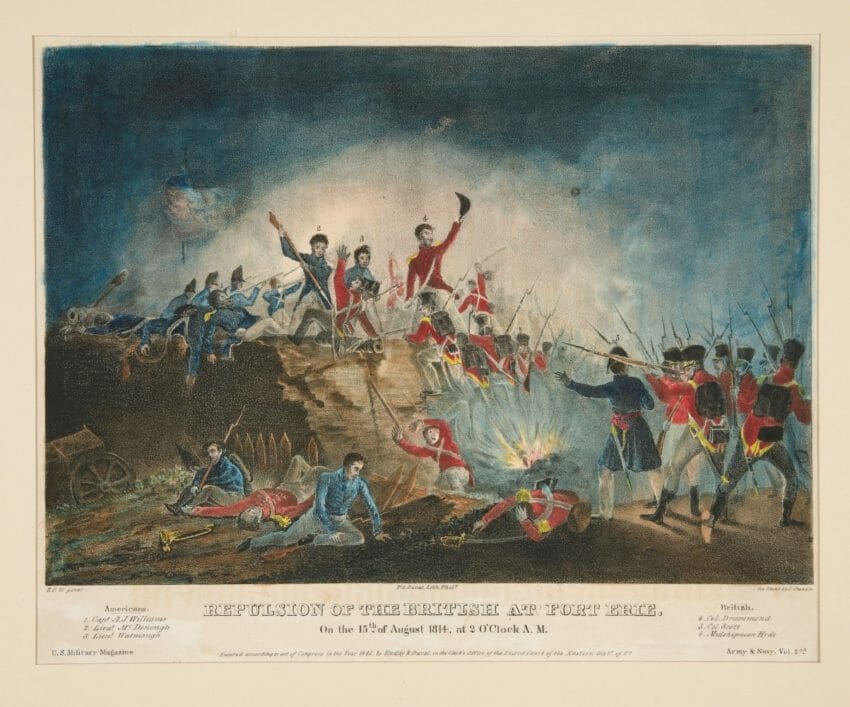
A lithograph based on an E.C. Watmough painting titled “Repulsion of the British at Fort Erie, 15 August 1814.” It depicts an attack that occurred at the U.S.-Canadian border during the War of 1812.
Image via AntiWar.com
“The acquisition of Canada, this year, as far as the neighborhood of Quebec, will be a mere matter of marching.” —Thomas Jefferson (1812)
“People speaking the same language, having the same laws, manners and religion, and in all the connections of social intercourse, can never be depended upon as enemies.” —Baron Frederick de Gaugreben, British officer, in 1815
No one seems to know this (or care), but the United States had long coveted Canada. In two sequential wars, the U.S. Army invaded its northern neighbor and intrigued for Canada’s incorporation into the republic deep into the 19th century. Here, on the Canadian front, the conflict most resembled a civil war.
Canada was primarily (though sparsely) populated by two types of people: French Canadians and former American loyalists — refugees from the late Revolutionary War. Some, the “true” loyalists, fled north just after the end of the war for independence. The majority, however, the “late” loyalists, had more recently settled in Upper Canada between 1790 and 1812. Most came because land was cheaper and taxes lower north of the border. Far from being the despotic kingdom of American fantasies, Canada offered a life rather similar to that within the republic. Indeed, this was a war between two of the freest societies on earth. So much for modern political scientists’ notions of a “Democratic Peace Theory” — the belief that two democracies will never engage in war. Britain had a king, certainly, but also had a mixed constitution and one of the world’s more representative political institutions.
In many cases families were divided by the porous American-Canadian border. Loyalties were fluid, and citizens on both sides spoke a common language, practiced a common religion and shared a common culture. Still, if and when an American invasion came, the small body of British regular troops would count on these recent Americans — these “late” loyalists — to rally to the defense of mother Canada.
And came the invasion did. Right at the outset of the war in fact. Though the justification for war was maritime and naval, the conflict opened with a three-pronged American land invasion of Canada. The Americans, for their part, expected the inverse of the British hopes — the “late” loyalists, it was thought, would flock to the American standard and support the invasion. It never happened. Remarkably, a solid base of Canadians fought as militiamen for the British and against the southern invaders. Most, of course, took no side and sought only to be let alone.
It turned out the invading Americans found few friends in Canada and often alienated the locals with their propensity for plundering and military blunder. Though the war raged along the border — primarily near Niagara Falls and Detroit — for nearly three years the American campaign for Canada proved to be an embarrassing fiasco. Defeats piled up, and Canada would emerge from the war firmly in British hands. In the civil war along the border, the Americans were, more often than not, the aggressors and the losers.
[…]
The Treaty of Ghent, which ended the war, changed nothing. There was no change of borders, and the British said nothing about impressment — the purported casus belli! So just what had those thousands died for?
Certainly it was no American victory that forced the British to the peace table. By 1814 the war had become a debacle. Two consecutive American invasions of Canada had been stymied. Napoleon was defeated in April 1814, and the British finally began sending thousands of regular troops across the Atlantic to teach the impetuous Americans a lesson — even burning Washington, D.C., to the ground! (Though in fairness it should be noted that the Americans had earlier done the same to the Canadian capital at York.) The U.S. coastline was blockaded from Long Island to the Gulf of Mexico; despite a few early single ship victories in 1812, the U.S. Navy was all but finished by 1814; the U.S. Treasury was broke and defaulted (for the first time in the nation’s history) on its loans and debt; and 12 percent of U.S. troops had deserted during the war.
The Americans held few victorious cards by the end of 1814, but Britain was exhausted after two decades of war. Besides, they had never meant to reconquer the U.S. in the first place. A status quo treaty that made no concessions to the Americans and preserved the independence of Canada suited London just fine.
June 7, 2018
Trade war with Canada justified because the White House was torched in the War of 1812
Maybe it was intended as a joke, but what else was Trump supposed to say when Trudeau actually asked what actual security threat Canada poses to the United States?
During a phone call with Canadian Prime Minister Justin Trudeau last weekend, President Donald Trump reportedly justified his decision to impose tariffs on Canadian steel and aluminum by invoking … the burning of the White House by British troops during the War of 1812.
At least, that’s what CNN is reporting this afternoon. Here’s how they put it, citing information from “sources familiar with the call: “Trudeau pressed Trump on how he could justify the tariffs as a ‘national security’ issue. In response, Trump quipped to Trudeau, ‘Didn’t you guys burn down the White House?'”
That is, presumably, a reference to the War of 1812, during which British troops invaded Washington, D.C., and set fire to the White House. Despite the war’s name, the burning of the White House actually occurred in 1814. And it wasn’t carried out by Canadians because, well, Canada did not become an independent nation until 1867 — or 53 years after the White House burned.
But, sure, whatever. The War of 1812 makes Canada a national security threat in the year 2018, despite our having been allies for the last century, sharing the world’s longest unpatrolled border, and exchanging more than $620 billion in goods last year. The rationales for war with Canada in Canadian Bacon and South Park: Bigger, Longer & Uncut are more grounded in reality.
June 18, 2017
Sabres and Smoke: The War of 1812
Last month, Military History Now profiled a new game (and new Ontario-based game company): unusually for today, it’s not a computer game, but a board wargame:
MHN: Tell us about the game.
Sheppard: Sabres and Smoke: the War of 1812 is a two-player light strategy board game that allows players to relive 16 of the War of 1812’s most important battles. From Queenston Heights to Fort York, players command either the British or American armies in battles that shaped the future of North America.
MHN: Tell us about Hand 2 Hand Entertainment. Who are you guys? How did you get started?
Sheppard: We are based near Toronto, Canada and have been working on Sabres and Smoke: The War of 1812 since July of 2016. I founded Hand 2 Hand Entertainment in 2016, the summer after I finished Grade 12, because I although I was lucky enough to find a summer job, there were no hours available. So, I decided to spend my time combining two things that I really enjoy: history and board games. I started by visiting battle sites from the War of 1812 and doing extensive research to make my game historically accurate. From there I created the battle scenarios and the game rules. Hand 2 Hand Entertainment spent the fall and winter designing Sabres and Smoke: The War of 1812, and preparing to launch a Kickstarter campaign in the summer of 2017. This summer, I am running the company out of the Propel Summer Incubator (PSI) program with the Propel Centre for Entrepreneurship at the University of Western Ontario.
[…]
MHN: The computer wargaming market is enormously popular; what can tabletop games offer that computers can’t?
Sheppard: This is an interesting question. I think there is a certain satisfaction to physically moving units on a battlefield in board games like this. Although you can look at units and terrain from a commander’s perspective in video games, doing it on a board feels more real. Players can look at the board in the same way Generals would have looked at maps when commanding real battles throughout history. I think this is what makes light strategy board games special.
February 14, 2017
Fortress Ottawa, a post-War of 1812 alternative use for Parliament Hill
Colby Cosh linked to this Ottawa Citizen article by Andrew King:
Mapped out with defensive moats, trenches and cannon placements, Bytown’s sprawling stone fortification on the hill was a typical 19th century “star fort,” similar to Fort George in Halifax, also known as Citadel Hill, and the Citadelle de Québec in Quebec City. The “star fort” layout style evolved during the era of gunpowder and cannons and was perfected by Sebastien Le Prestre de Vauban, a French engineer who studied 16th century forts designed by the Knights of Malta. A star fort built by the order with trenches and angled walls withstood a month-long siege by the Ottoman Empire. This layout remained the standard in fort design until the 20th century.
Ottawa’s planned fortress would have also integrated a water-filled moat trench to the south, where Laurier Street is now, to impede an attack. On the northern side, the natural limestone cliffs along the Ottawa River would have served as a defensive measure. Access and resupply points were at the canal near the Sappers Bridge, and a zigzagging trench with six-metre-high stone walls would have run parallel to Queen Street. Parliament Hill, with its gently sloping banks to the south, was called a “glacis” positioned in front of the main trench so that the walls were almost totally hidden from horizontal artillery attack, preventing point-blank enemy fire.
After the rebellions were quashed and the threat of an attack from the United States fizzled out by the mid-1850s, Canada abandoned plans to fortify Bytown.
In 1856, the Rideau Canal system was relinquished to civilian control, and three years later Bytown was selected as the capital of the Province of Canada. The grand plans for Ottawa’s massive stone fortress were shelved and the area that would have been Citadel Hill became the scene of a different kind of battle, that of politics.
July 1, 2016
QotD: The USA is finally over the War of 1812
On behalf of the United States of America and the Department of Defense, I wish our partners in North American defense a very Happy Canada Day.
We have long stood on the same team, as allies, except for the War of 1812, which was 200 years ago and no one really remembers that anymore. I certainly don’t spend a lot of time thinking about how insane it would be to ever trust a Canadian, and definitely never think about how fast and easy it would be to grow the United States from 50 states to 60.
This day celebrates over 148 years of a united Canada, one of the most peaceful, democratic and stable nations on Earth. You are an example to the world, and we as Americans celebrate alongside you, not to keep an eye on what you’re doing to make sure you don’t start building a coalition to say, bombard Baltimore Harbor again, but because the lessons of the past make us stronger together. And really, we should be even closer together.
Canada Day recognizes the day in which three independent colonies united as one Canada. America, too, is a nation of independent colonies, united under a shared vision of liberty and justice for all. If one were to really think about it, it would make a lot of sense to have a larger America, from sea to shining Arctic sea, and really it probably would have happened a century ago if some of the colonies wouldn’t have started backing the British, even after they interfered with Atlantic shipping.
We could have called it, I don’t know, “Amerida” for a while, but honestly United States of America is a great name so I think we’d just go for that. Occasionally I toy around with thinking about how we could have solved that bi-lingualism burden Canada has. Like Montreal, Atlanta was a beautiful, old world city too — until November 16, 1864. I think we’d get rid of that quirky metric system, too. If you ask me, freedom isn’t divisible by ten. But that’s certainly not the kind of thing that I’d think about on Canada Day. Canada Day is a joyful day for celebration.
“Secretary of Defense Ashton Carter”, “SECDEF: This Canada Day, We Are Totally Over War Of 1812”, Duffelblog, 2015-07-01.


